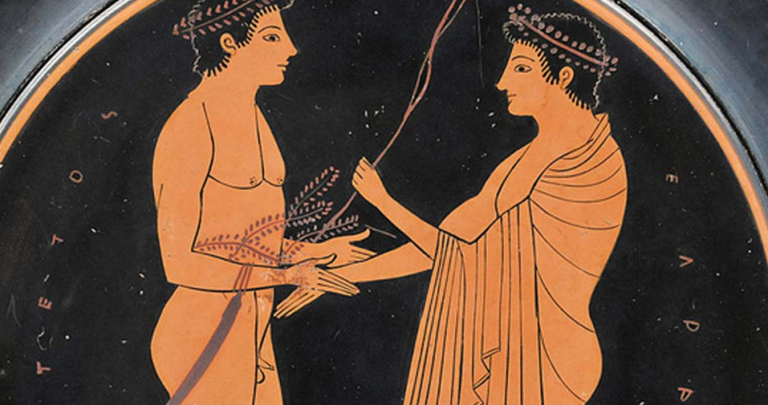Today, bigger is widely regarded as better. But was this always the case? This article sheds some light on how the Western culture changed in its phallic preferences. Over the past few decades, pornography has played a role in the infatuation of inflated sizes. But in ancient times, men were intentionally portrayed with small genitals. Why was this the case? The story starts all the way back in ancient Greece…
Classical Preferences in Penis Size
If you have ever walked around a museum of classical work (meaning from ancient Greece or Rome) or if you have ever seen a photo of Michelangelo’s David, you may have noticed that male genitals are depicted with a smaller than average size. You are not mistaken. Greeks preferred their heroes to have small members. This preference was then transmitted through Roman, Christian, and ultimately Renaissance art.
It may sound like a silly thing to think about; maybe a tour guide or teacher scolded you for even asking about it. But academics have deeply considered the penis size of classical works of art. For instance, a study entitled “Penile representations in ancient Greek art” was conducted in 2013 by the University of Athens and published in the US National Library of Medicine.
How a BA pilot got sucked out of a cockpit window, but lived to tell the tale
Egyptian billionaire Naguib Sawiris says Turkey’s Erdogan wants to be “new Ottoman emperor”
The study’s stated methods were “The examination of a great number of penile representations from the ancient Greek pottery and sculpture and the review of the ancient theater plays (satiric dramas and comedies)” (Rempelakos, Tsiamis, and Poulakou-Rebelakou, 2013). So leave your giggles aside – this is serious stuff.
Anatomical Influences
There are a couple of important things to bear in mind. First, as art historian Ellen Oredsson notes in discussing penis size in classical sculptures, “they’re flaccid. If you compare their size to most flaccid male penises, they are actually not significantly smaller than real-life penises tend to be”, (Oredsson, 2016).
Read more: Ancient Origins
Ask me anything
Explore related questions





